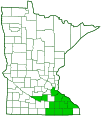wild sweet William
(Phlox maculata ssp. maculata)
Conservation • Wetland • Description • Habitat • Ecology • Use • Distribution • Taxonomy
Description |
||
Wild sweet William is a 16″ to 36″ tall, erect, perennial forb that rises on a single stem from a shallow, slender rhizome. The stems are unbranched, spotted or streaked with purple, and hairless or covered with minute, short hairs. There are 10 to 15 pairs of opposite leaves on the stem. They are 3″ to 4″ long, and up to ¾″ wide. The lower leaves are narrowly lance-shaped to linear and stalkless. The upper leaves are lance-shaped to oblong egg-shaped and clasp the stem at the base. The margins are untoothed and usually hairless. The upper surface is dark green and often glossy. The lateral veins are obscure. The inflorescence is a cylinder-shaped or narrowly cone-shaped cluster of about 100 flowers at the end of the stem and in the upper leaf axils. The clusters in upper leaf axils are on short stalks, giving the overall appearance of a single, cylinder-shaped, terminal inflorescence. The calyx is hairless. The flowers are ½″ to 1″ wide and fragrant. They have 5 purple, pink, or white petals. The petals unite at the base forming a long, thin corolla tube, then separate into 5 long, widely spreading lobes. The petal lobes are overlapping, almost round, and are not notched at the tip. The stamens are visible at the opening of the corolla tube but do not extend far beyond the tube. The fruit is a 3-chambered, egg-shaped capsule with 1 or several seeds per chamber. |
||
Height |
||
16″ to 36″ |
||
Flower Color |
||
Purple, pink, or white |
||
Similar Species |
||
Garden phlox (Phlox paniculata) is a cultivated plant that can get to six feet tall. The stems are more leafy, with 15 to 40 pairs of opposite leaves. Upper leaves are not quite opposite. The leaves are conspicuously veined. Leaf margins have bristly hairs. The inflorescence is rounded. Wild blue phlox (Phlox divaricata ssp. laphamii) is a smaller plant, 9″ to 18″ tall at maturity. The petal lobes abruptly narrow before the throat. The stamens are not visible at the opening of the corolla tube. Moss phlox (Phlox subulata ssp. subulata) is a prostrate ground cover with whorled, linear to awl-shaped leaves. The flower petals are notched at the tip. It is found in rocky areas and sandy or gravelly soil. Dame’s rocket (Hesperis matronalis) has alternate, toothed leaves and flowers with four petals. |
||
Habitat |
||
Lowland woods, wet meadows. Full or partial sun. |
||
Ecology |
||
Flowering |
||
June to September |
||
Pests and Diseases |
||
|
||
Use |
||
|
||
Distribution |
||||
|
Sources |
|||
| 7/22/2023 | ||||
Nativity |
||||
Native |
||||
Occurrence |
||||
|
||||
Taxonomy |
|||
| Kingdom | Plantae (Plants) | ||
| Division | Tracheophyta (Vascular Plants) | ||
| Subdivision | Spermatophytina (Seed Plants) | ||
| Class | Magnoliopsida (Dicots) | ||
Order |
Ericales (heathers, balsams, primroses, and allies) | ||
Family |
Polemoniaceae (phlox) | ||
| Subfamily | Polemonioideae | ||
Genus |
Phlox (phloxes) | ||
| Section | Phlox | ||
| Species | Phlox maculata (wild sweet William) | ||
Subordinate Taxa |
|||
Synonyms |
|||
| Phlox maculata var. odorata | |||
Common Names |
|||
meadow phlox northern meadow phlox spotted phlox wild sweet William wild sweetwilliam |
|||
Glossary
Calyx
The group of outer floral leaves (sepals) below the petals, occasionally forming a tube.
Clasping
Describing a leaf that wholly or partly surrounds the stem but does not fuse at the base.
Corolla
A collective name for all of the petals of a flower.
Linear
Long, straight, and narrow, with more or less parallel sides, like a blade of grass.
Rhizome
A horizontal, usually underground stem. It serves as a reproductive structure, producing roots below and shoots above at the nodes.
Visitor Photos |
|||||
Share your photo of this plant. |
|||||
| This button not working for you? Simply email us at info@MinnesotaSeasons.com. Attach one or more photos and, if you like, a caption. |
|||||
|
|||||
MinnesotaSeasons.com Photos |
|||||
Plant |
|||||
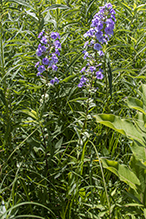 |
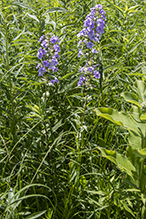 |
||||
Inflorescence |
|||||
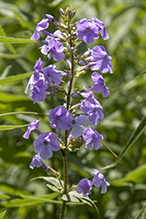 |
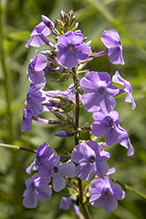 |
||||
Flowers |
|||||
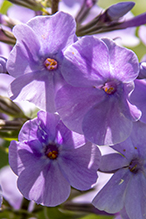 |
|||||
Flower |
|||||
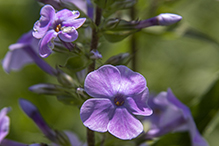 |
|||||
Stem |
|||||
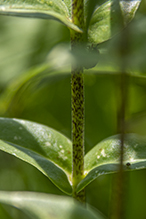 |
|||||

Slideshows |
||

Visitor Videos |
|||
Share your video of this plant. |
|||
| This button not working for you? Simply email us at info@MinnesotaSeasons.com. Attach a video, a YouTube link, or a cloud storage link. |
|||
Other Videos |
|||

Visitor Sightings |
|||||
Report a sighting of this plant. |
|||||
| This button not working for you? Simply email us at info@MinnesotaSeasons.com. Be sure to include a location. |
|||||
|
|||||
MinnesotaSeasons.com Sightings |
|||||

|
Created: Last Updated: © MinnesotaSeasons.com. All rights reserved. |
